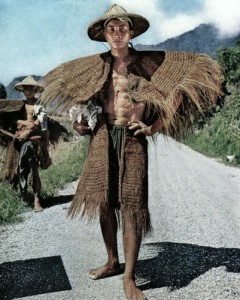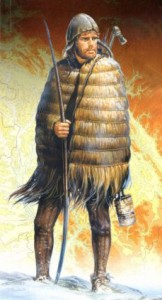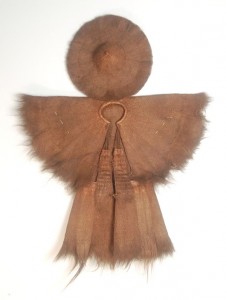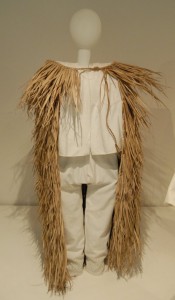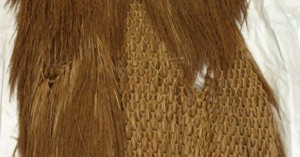Mexican palm leaves have been used for centuries by different cultures around the world. At Forever Bamboo, we sell Mexican thatch as coverings for tiki bars, gazebos, and palapas. Five thousand years ago, palm leaves were used as clothing to protect against various weather conditions. The natural fibers in palm leaves act as a waterproof material that is ideal for constructing rain capes.
Rain capes were often worn by farmers and fisherman during summer and winter seasons. In China, early rain capes consisted of straw, split bamboo, or millet is known as Kow-Liang. The capes covered the shoulders and body which also helped to alleviate possible sunburn while working in fields. Today, palm fiber rain capes are rare to find, but can still be found in certain areas of Western China. Skilled craftsman would carefully strip pieces of palm fiber, flatten it, and weave the leaves together until a full body cape was completed. The capes would be worn around the neck and stop at knee length for flexibility.
Variations of Rain Capes
There are many variations of rain capes depending on the availability of resources within different countries. Some resources include Harakeke (New Zealand Flax), Ti Kouka (Cabbage Tree), Pingao (Golden Sand Sedge), and Neinei (Spiderwood). There are two popular types of woven capes that are distinct to Mexico. Those styles are called Capote De Palma and Capisallo, which can still be found today. The palm leaves are loosely woven to achieve a natural look that often resembles bird feathers. Most fiber rain capes are intricately woven and knotted to ensure durability and longevity. As time progressed, the designs of rain capes evolved and were made with fabrics such as burlap, coir hair, and silk. After the Ming Dynasty, wealthy families distinguished themselves with rain capes made from special Jade Needle Grass materials. The Jade Needle grass was considered an upgrade with smoother, softer, more attractive features.
Rain Capes As We Know Them Today
Although each country had a different method of design, rain capes were used universally as everyday attire. In the wintertime, rain capes served as great insulation to keep workers warm while working outside to collect food. Meanwhile, during the summer rain capes kept workers dry from torrential rain showers. The traditions of rain capes evolved and were used as garments of importance to distinguish upper-class families. Today, rain capes can be found in small indigenous areas of Pacific Rim countries, but are rare. The preferred way to dress for rain is with boots and an umbrella or simply just a jacket. The intricate weave method has been passed down for generations and is now more commonly used to create thatching products for home improvement projects. There are many different types of thatch that can be traced back many years ago.

